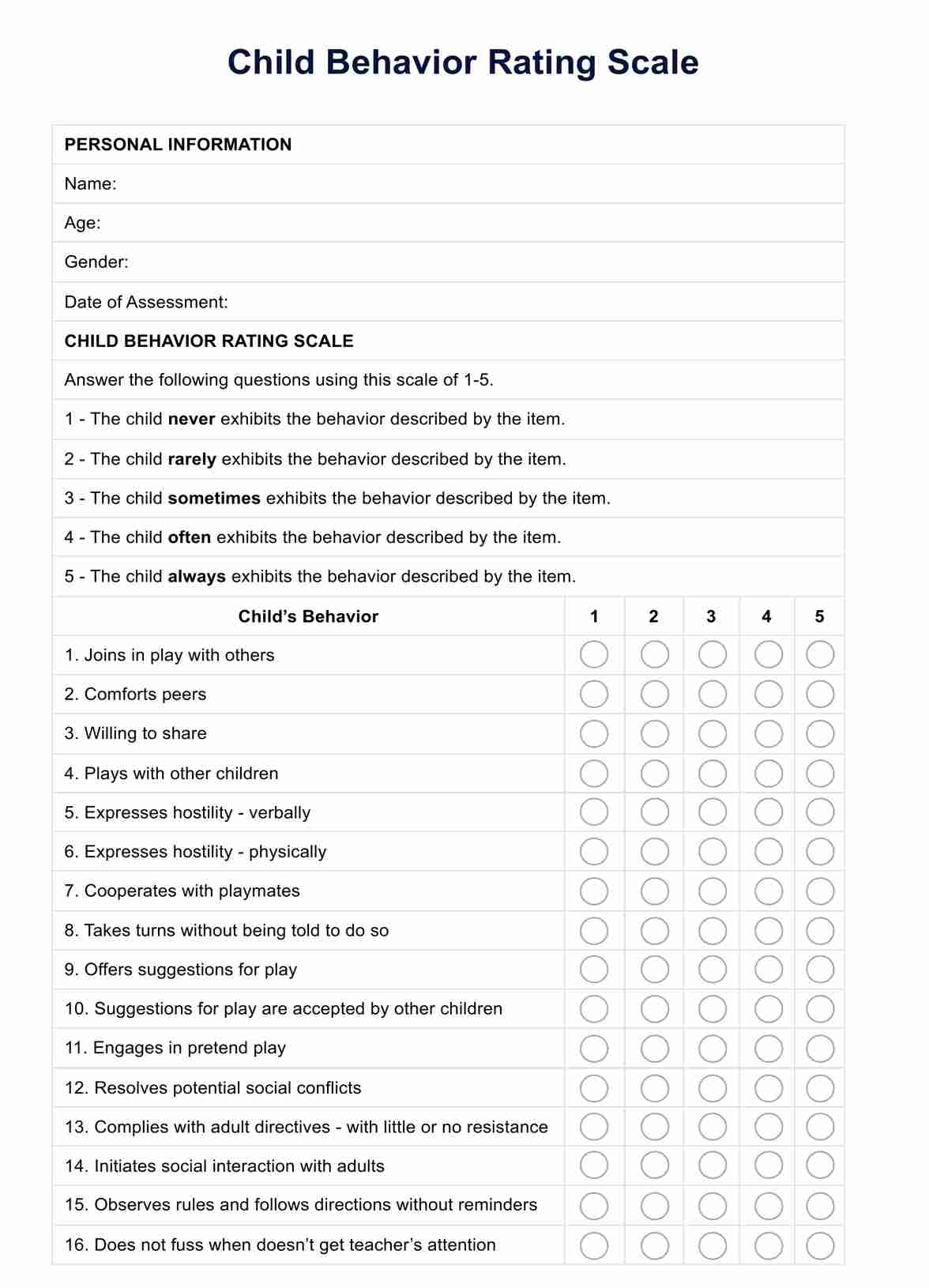Common behavior rating scales include the Behavior Assessment System for Children (BASC), Conners' Rating Scales, Child Behavior Checklist (CBCL), Achenbach System of Empirically Based Assessment (ASEBA), and Social Skills Improvement System Rating Scales (SSiS-RS).

Behavior Rating Scale
Introduce behavior rating scales to measure clients' relevant behavioral aspects to inform the next steps to take. Download a free PDF here.
Behavior Rating Scale Template
Commonly asked questions
Behavior rating scales cater to a vast age range, typically from early childhood (about two years old), to older children up to adulthood (usually up to 60 years). The specific age range differs from scale to scale. For example, the BASC-3 caters to individuals aged 2-21 years, while the CBCL has different forms for ages 1.5-5 years and 6-18 years.
Behavior rating scales for children evaluate a child's emotional and behavioral functioning. Popular examples include the Behavior Assessment System for Children (BASC), the Child Behavior Checklist (CBCL), and the Conners' Rating Scales. These assessments provide insights into various areas like aggression, impulse control, anxiety, attentional issues, and social skills, among others.
EHR and practice management software
Get started for free
*No credit card required
Free
$0/usd
Unlimited clients
Telehealth
1GB of storage
Client portal text
Automated billing and online payments











